This post may contain links to products that we use and love, and we may earn a commission at no cost to you.
Whenever we travel, we enjoy learning about the local history. My favorite souvenirs are history books. And so, when we read that the Fort Rock museum is a Homestead Village on the way to the town of Christmas Valley and our hike at Crack in the Ground, we wanted to go!
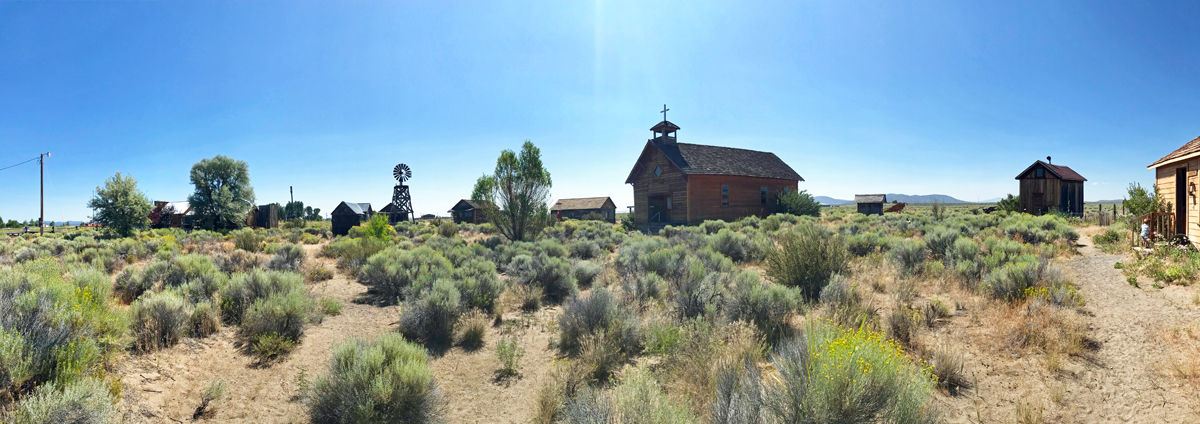
Step through the gate of the Homestead Museum, and you transport 150 years back in time. Enjoy your stay here, there’s nothing else quite like it!
Alas, the museum is only open Thursday through Sunday. We were going to be there on a Wednesday. The website suggests calling ahead, if a volunteer is available, they’ll open the museum especially for your group. But…I didn’t call. We planned our trip at the last minute and I just never got around to calling. But luck was with us. As we pulled into the empty parking lot, a motorcycle pulled in beside us. She was a volunteer for the museum, and she invited us in for a look around! She very graciously opened half a dozen buildings for us and told us about each one. We stayed maybe 45 minutes and were very, very grateful for her impromptu tour. And yes, we paid the admission and bought a t-shirt!
Our daughter, Camille, is our principle photographer. The story of the Homestead Village Museum is best told through her photos. I hope you enjoy the tour!
The Homestead Village Museum
The museum is located on the west side of Fort Rock, just across from the iconic rock itself. If you’re coming from the west side of Oregon, it’s one of the first things you see as you come into town. Just past the museum is a tiny gas station…we stopped for gas, but it wasn’t open yet (at 11 am! Small towns are so quaint!) so we turned back to see what we could see at the museum. To our utter delight, a volunteer docent happened to be there working, and she invited us in a for a quick look around.
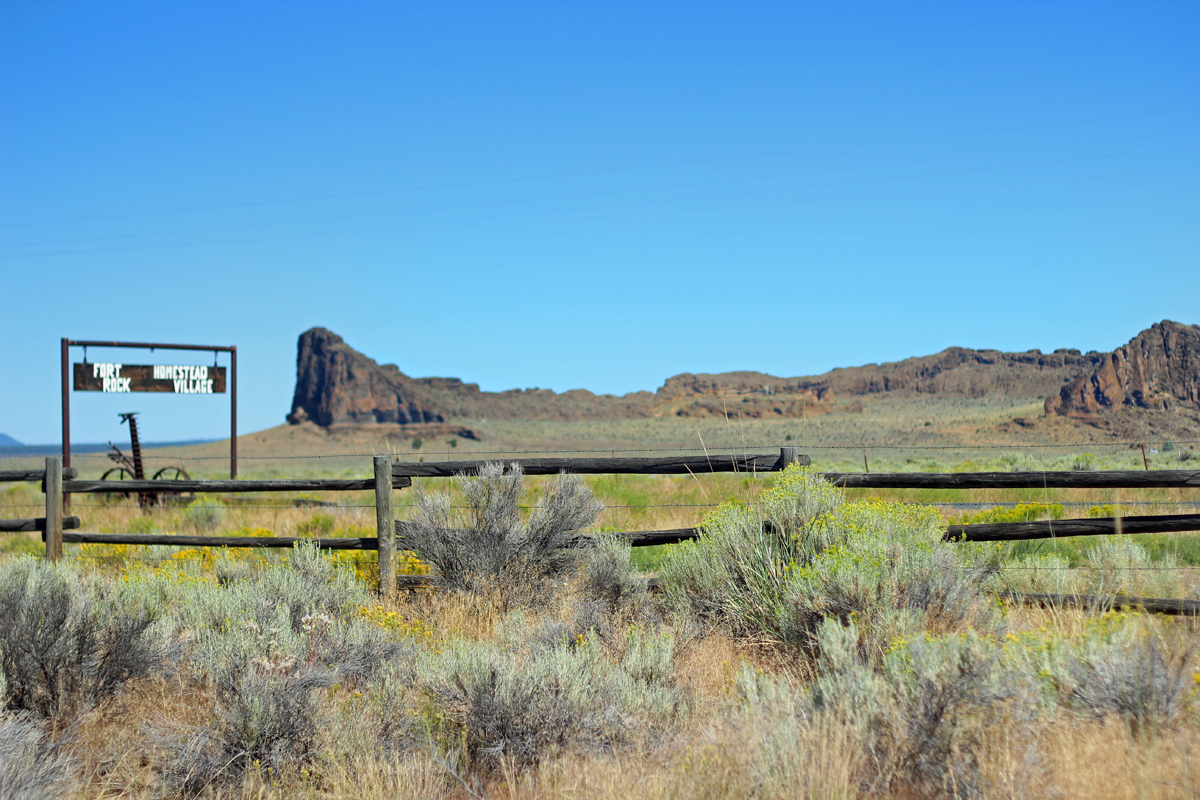
The sky is impossibly blue and seems to go on forever. It frames the Fort Rock landscape perfectly.
We entered through a side gate, and walked down a boardwalk, our feet thumping across the boards. Instantly, we left 2019 behind and entered a village straight out of 1900. The buildings — original buildings, carefully moved here for preservation — are arranged in a horseshoe facing the Fort Rock landmark.

As our son helped the docent measure some windows, she welcomed us to wander a bit. Naturally, we followed her! As she measured windows on the school building, we peeked in windows and ooh’d and aah’d over the antiques and artifacts inside each building. After finishing her own work, the docent offered to open a few buildings for us.
The Sunset School

Sunset School was built in 1912 and was originally located about 6 miles east of Fort Rock. It was the final school of that era still standing, and it was moved to Fort Rock first as a church, and then to the museum for restoration.
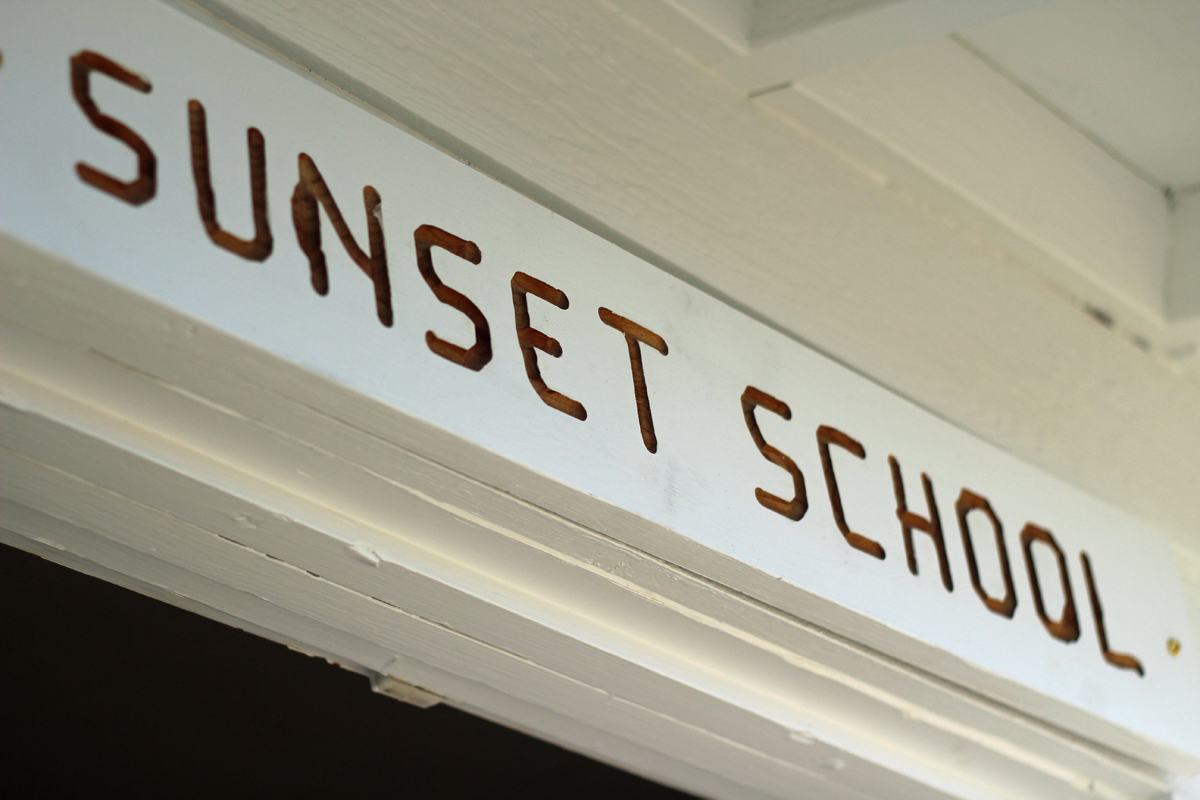
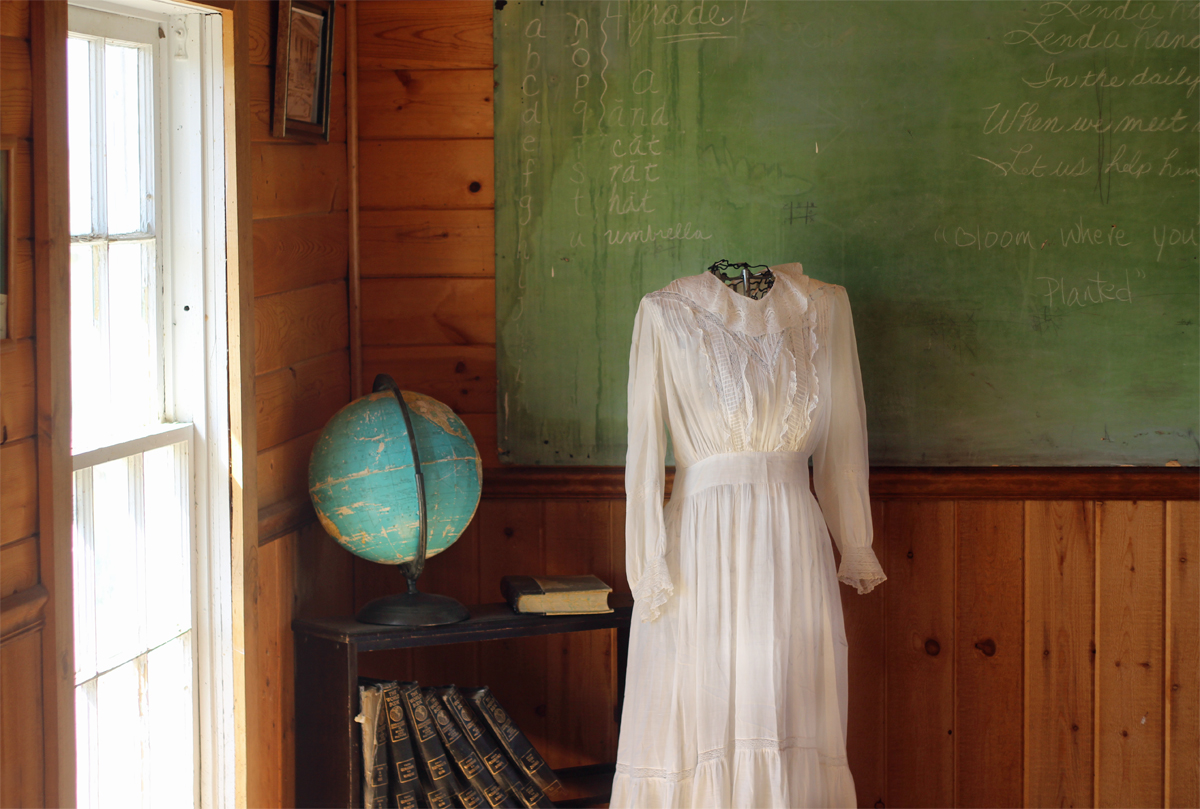
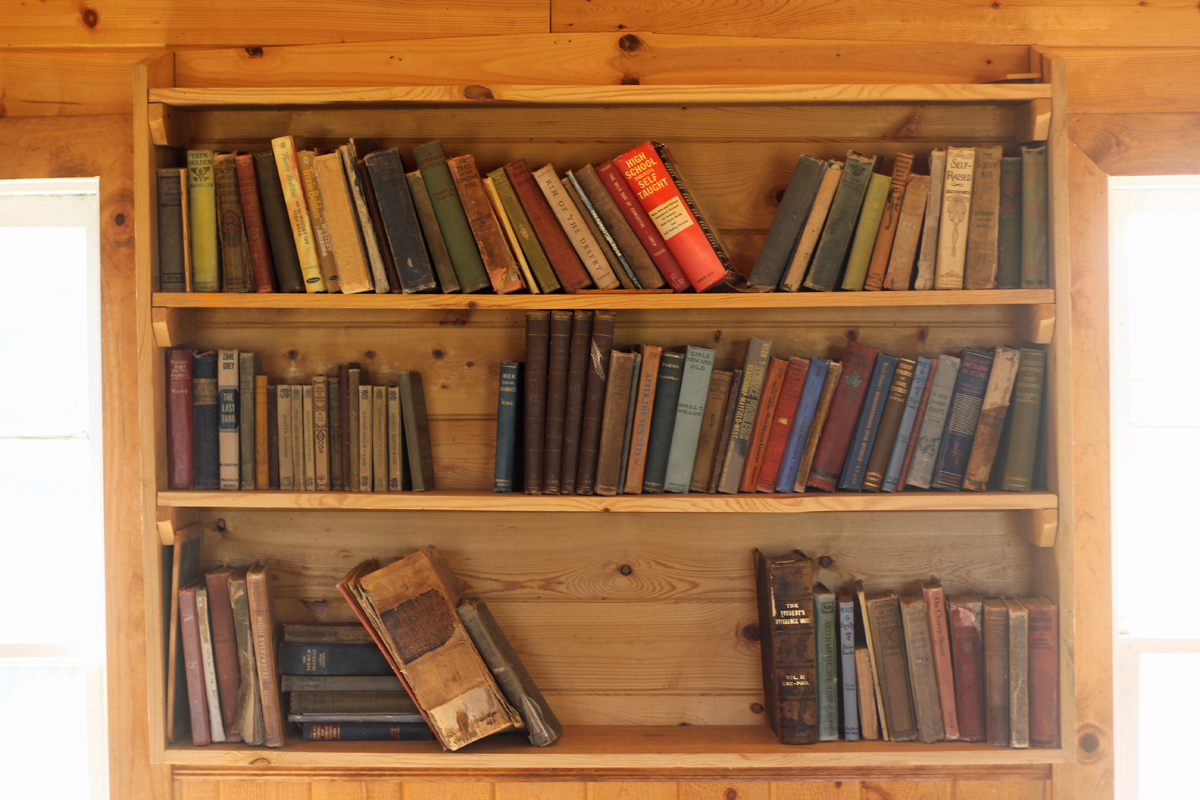
A wall of shelves held books from the turn of the century. School books used by children, readers and primers, and thick dictionaries awaited new students.

The docent offered to take a family photo, so we crowded onto a bench and gave her our best smiles!
Fort Rock General Store
Next door to the school is the mercantile and post office. We definitely wanted to see inside! This building has two rooms. The larger front room was the store, and the smaller room in back was the post office. Each contained items common to the era, and some were original if not to the building, then to the region.

The Fort Rock Mercantile was a store in the town of Fort Rock where early residents could buy groceries and gas. It was brought to the museum in 2009 and restored.
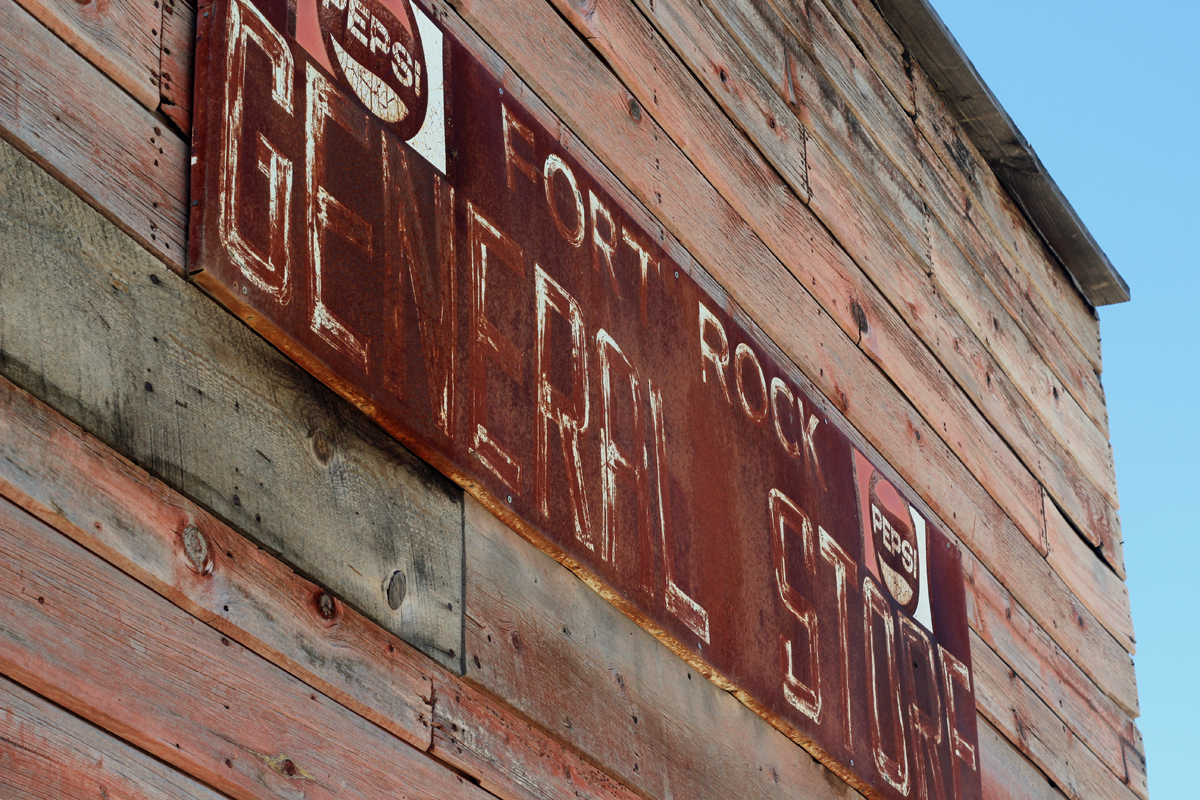
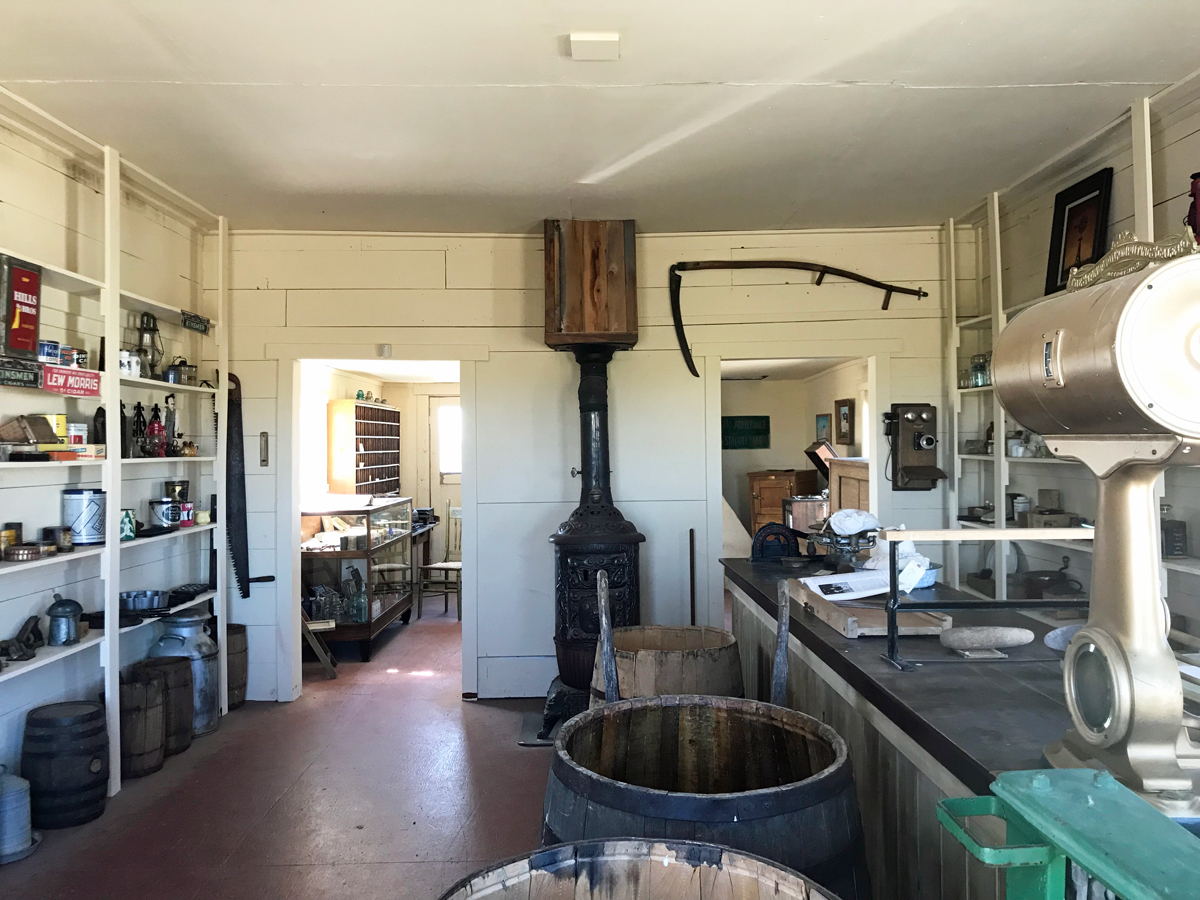
The larger front room held the general store.


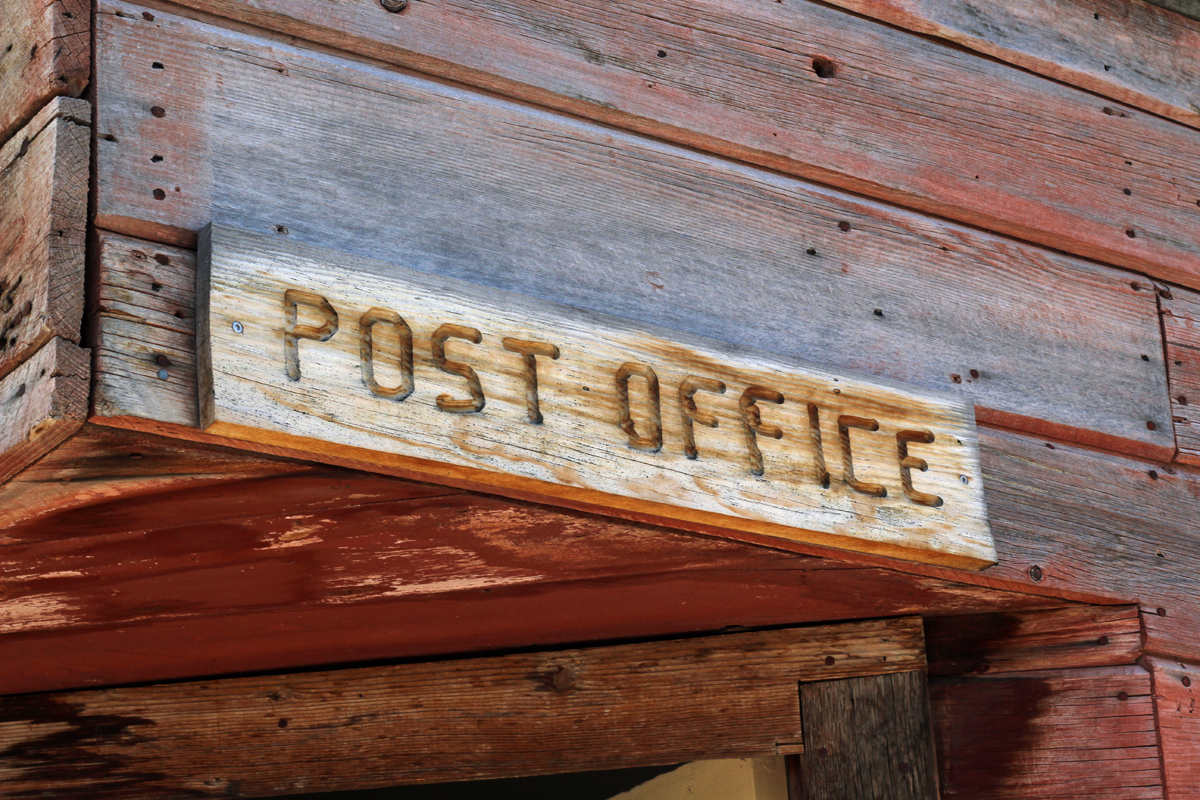

The Webster Cabin
Next on our tour is the Webster Cabin. A tiny two-room cabin built between 1915-1917, it was one of the first buildings to arrive at the museum. Britt Webster and his wife built the cabin for their first home about 10 miles northeast of the museum.


A cheerful wash bucket and some wildflowers welcome you to the Webster home.

Inside, a rag rug (probably modern, but indicative of the era) lent a colorful cast to the wooden floors.
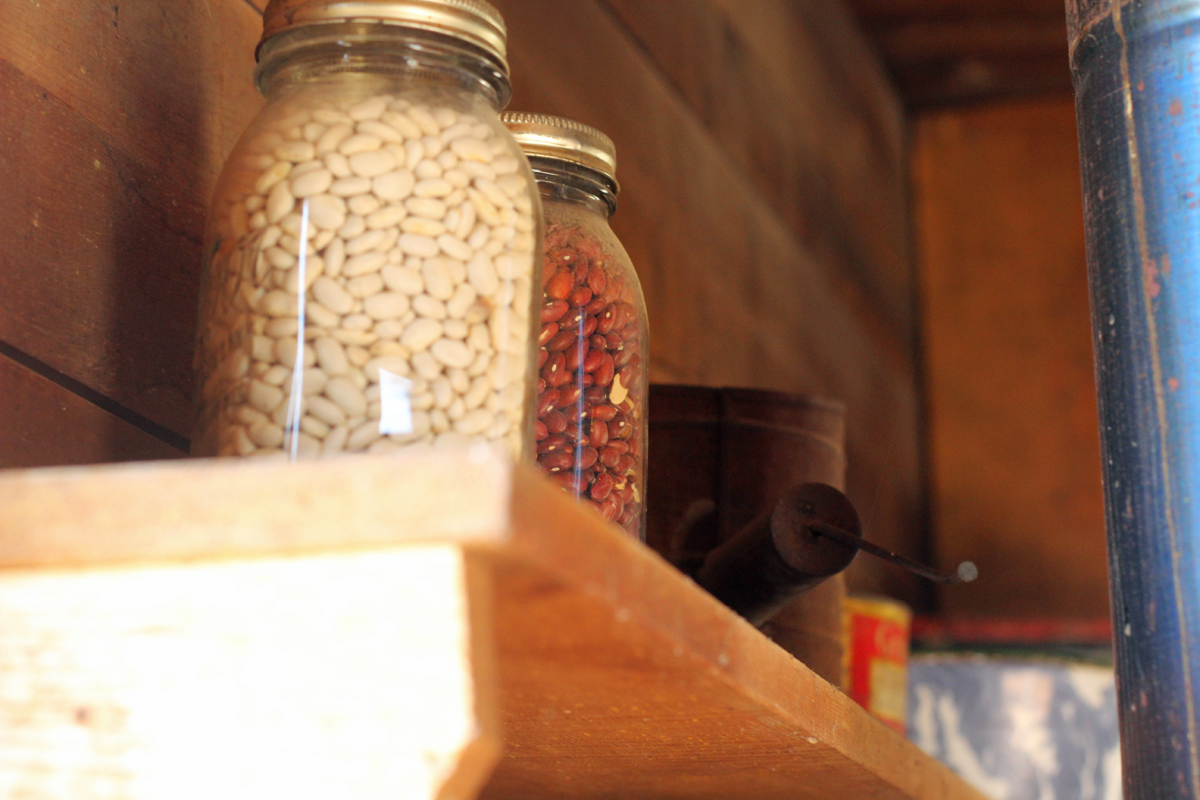
Goods line the walls on open shelves.
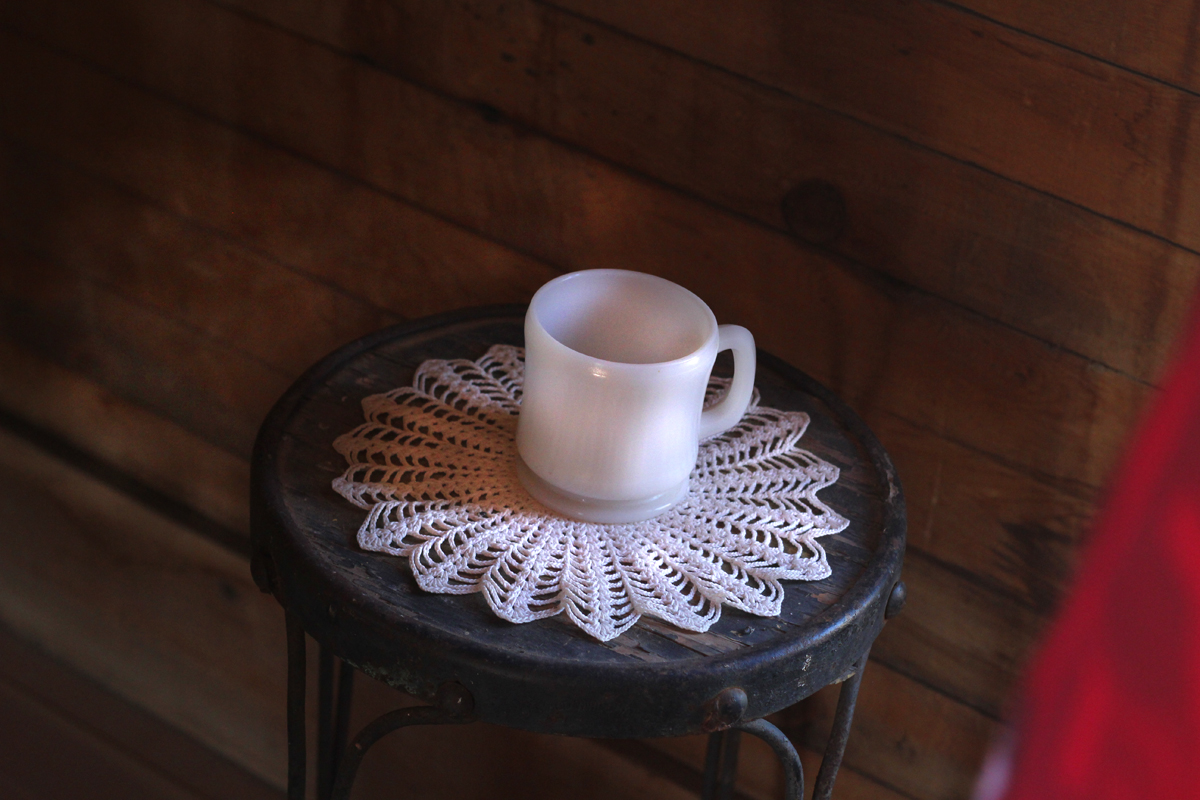
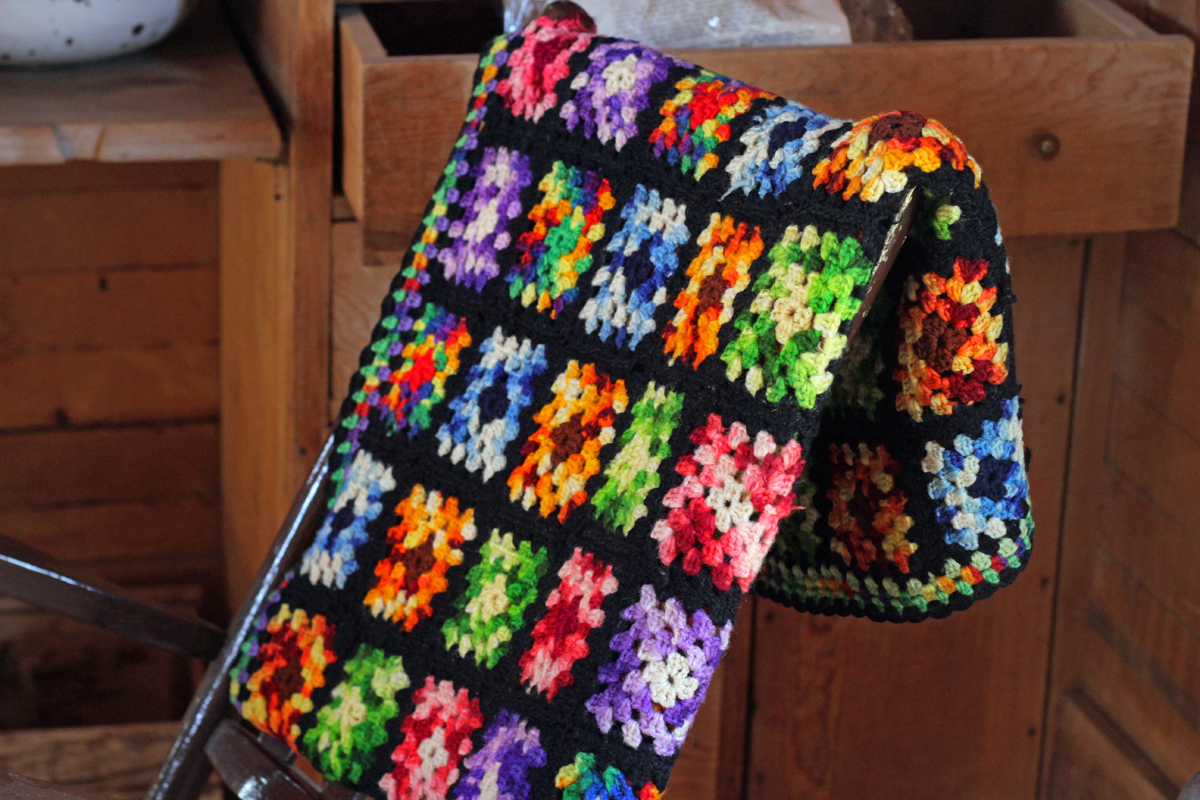
Crocheted afghans brighten up a dim interior, and would have provided cozy warmth on cold winter nights.
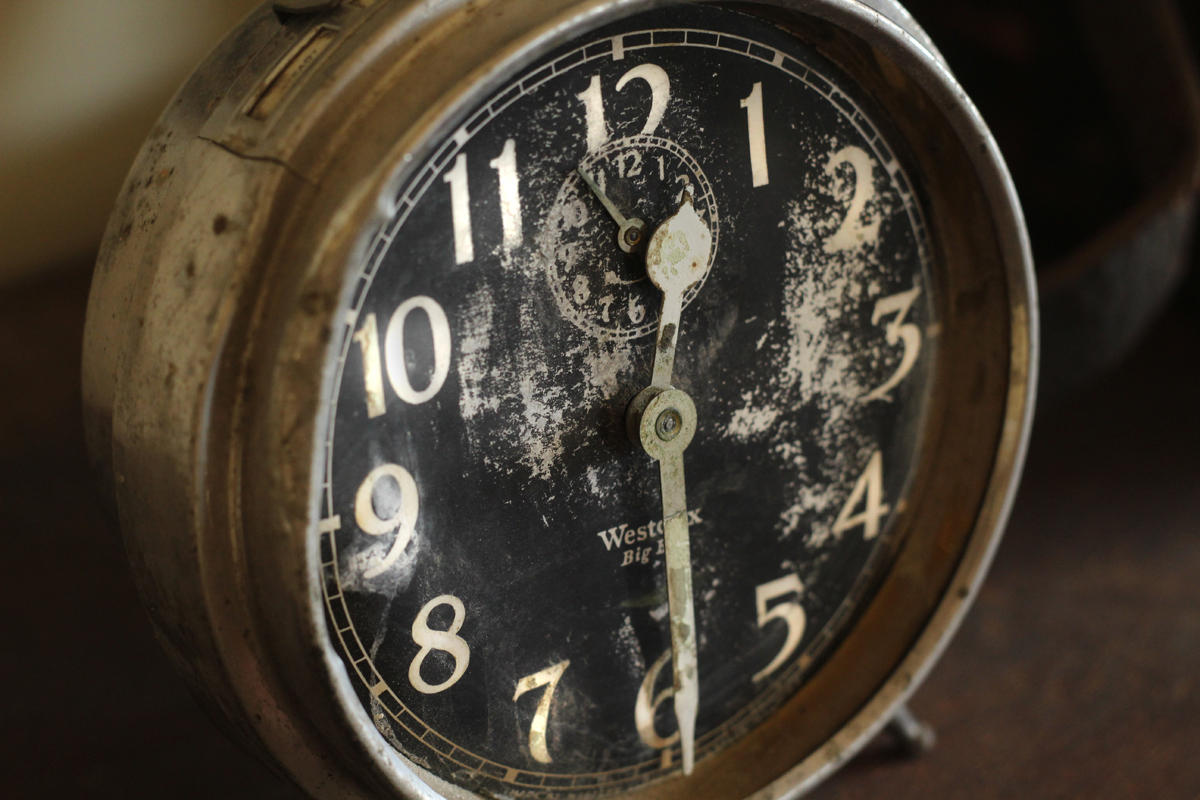
The Church
The next building we were dying to see was the St. Rose Catholic Church. Built in 1918, it was originally located in the town of Fleetwood, 11 miles east of Fort Rock. This church was the only real church building in the valley during the homesteading years. After repeated vandalizations threatened the building, volunteers moved it to the Fort Rock Homestead Village museum.
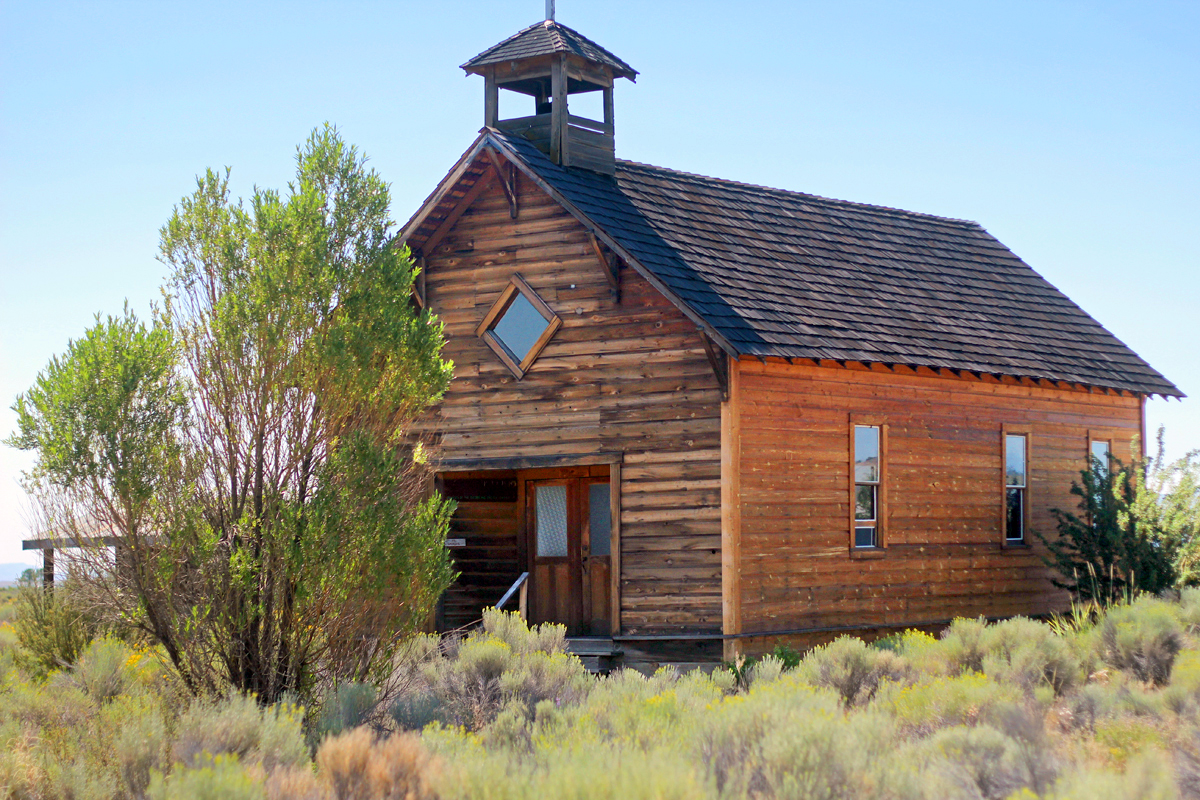

Be sure to look up and admire the unique diamond-shaped window!
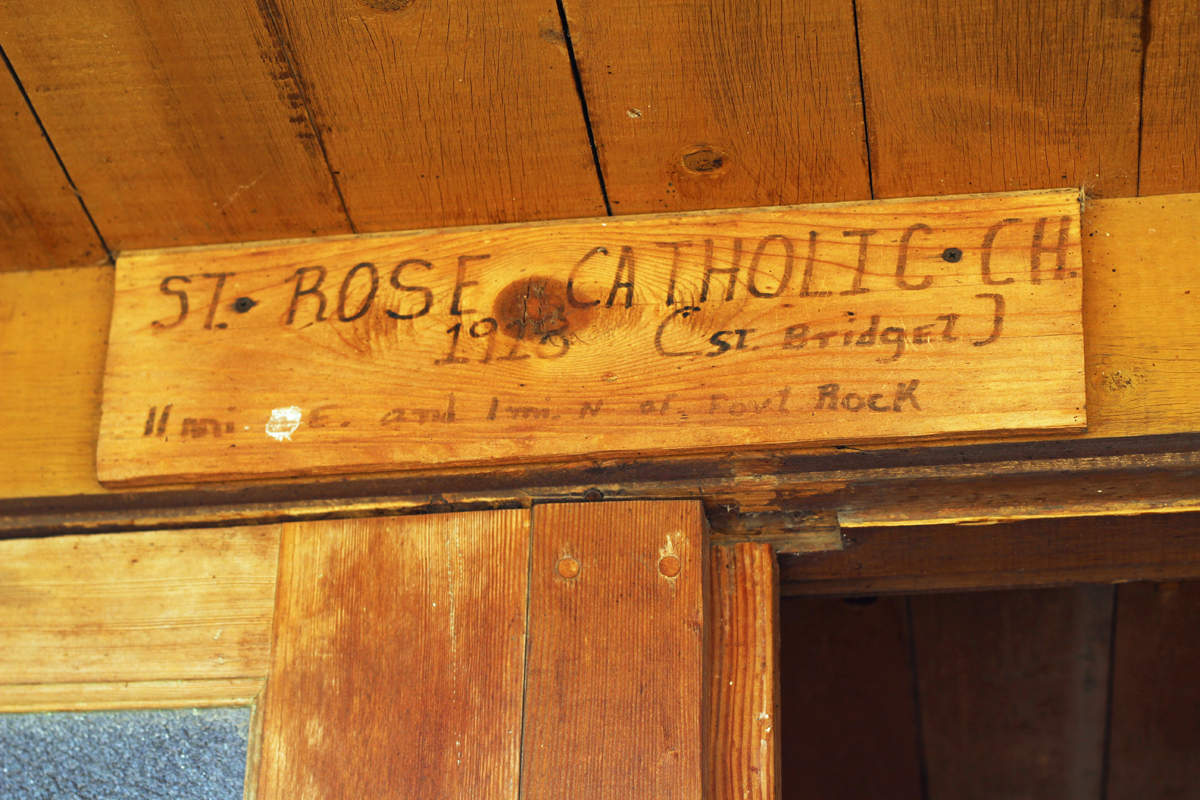
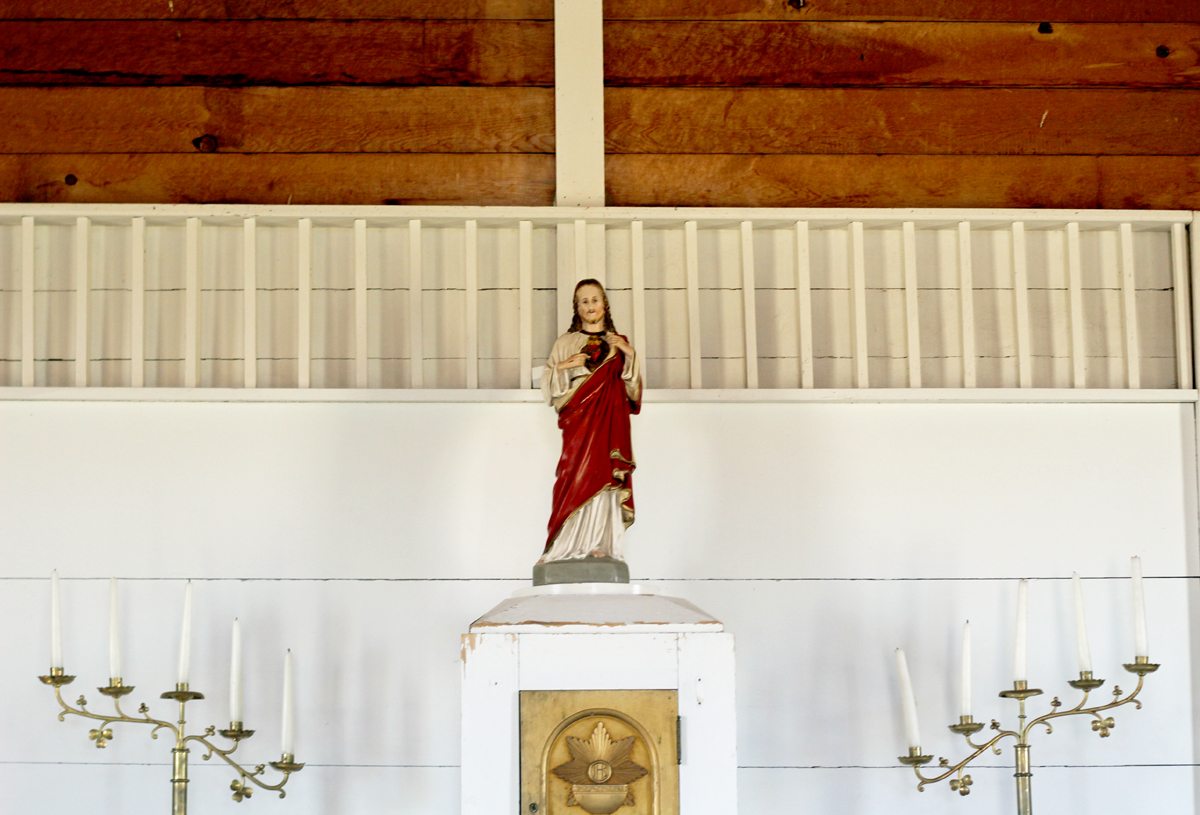

Note the wooden music stand.

The old stove appears to glow with warmth and energy. Truly, it’s a reflection of a sunbeam off the floor, but it looks inviting!
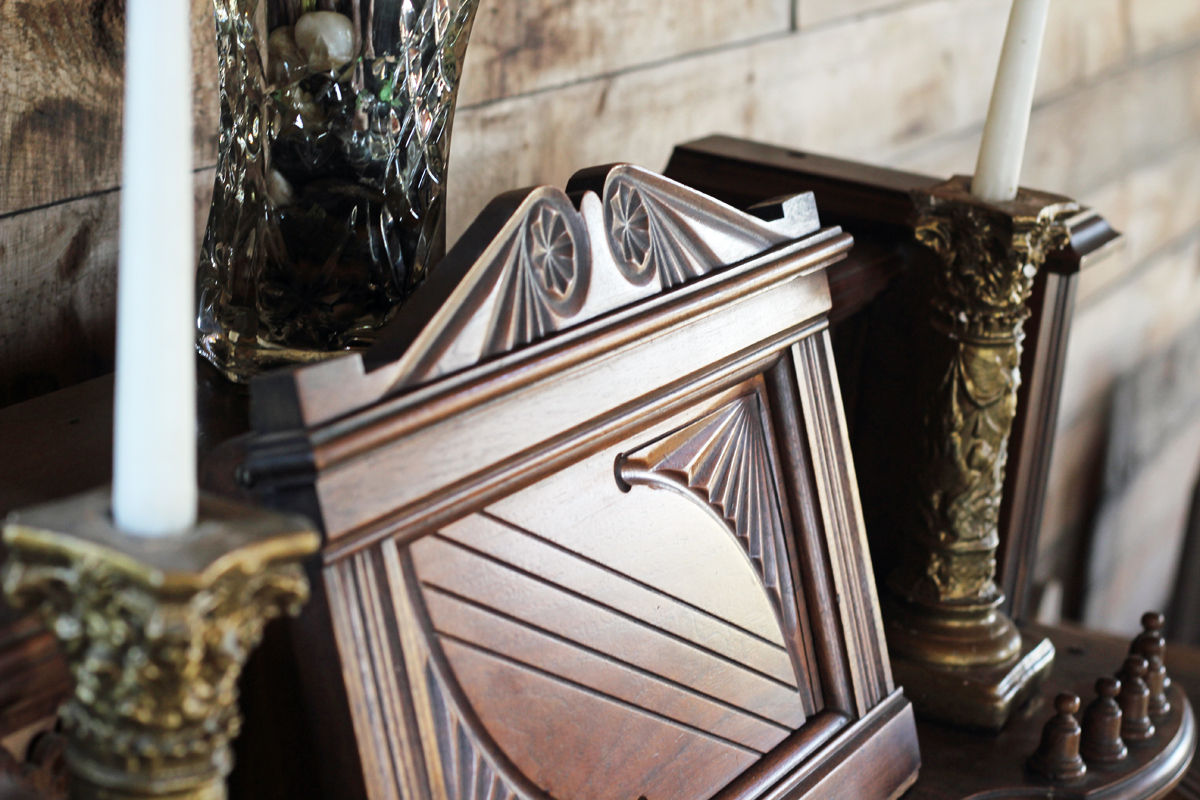
Dr Thom’s Office
No homesteader village is complete without the doctor’s office. Dr. Thom was located in Silver Lake and was the only doctor in the area from 1905 to around 1930. His clinic was built in 1907 in Silver Lake, Oregon, 16 miles south of it’s present location at the museum. He delivered babies, set broken bones, performed surgeries, and served 47 patients during the influenza epidemic of 1918, losing just one patient.
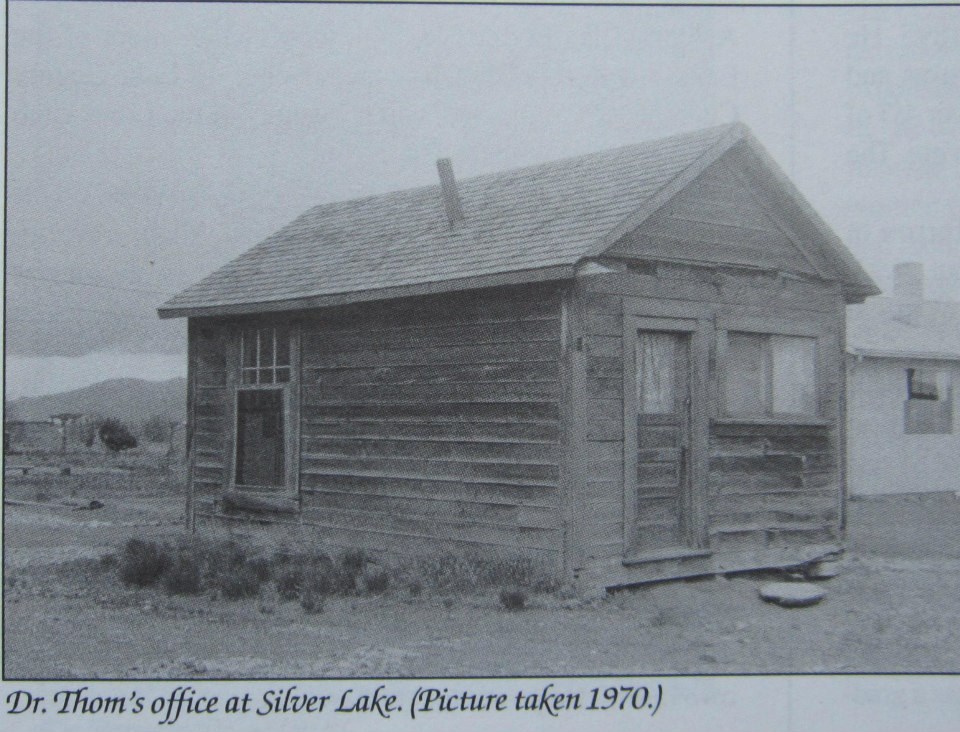
Photo from the Silver Lake Oregon History Facebook page. Original source unknown.
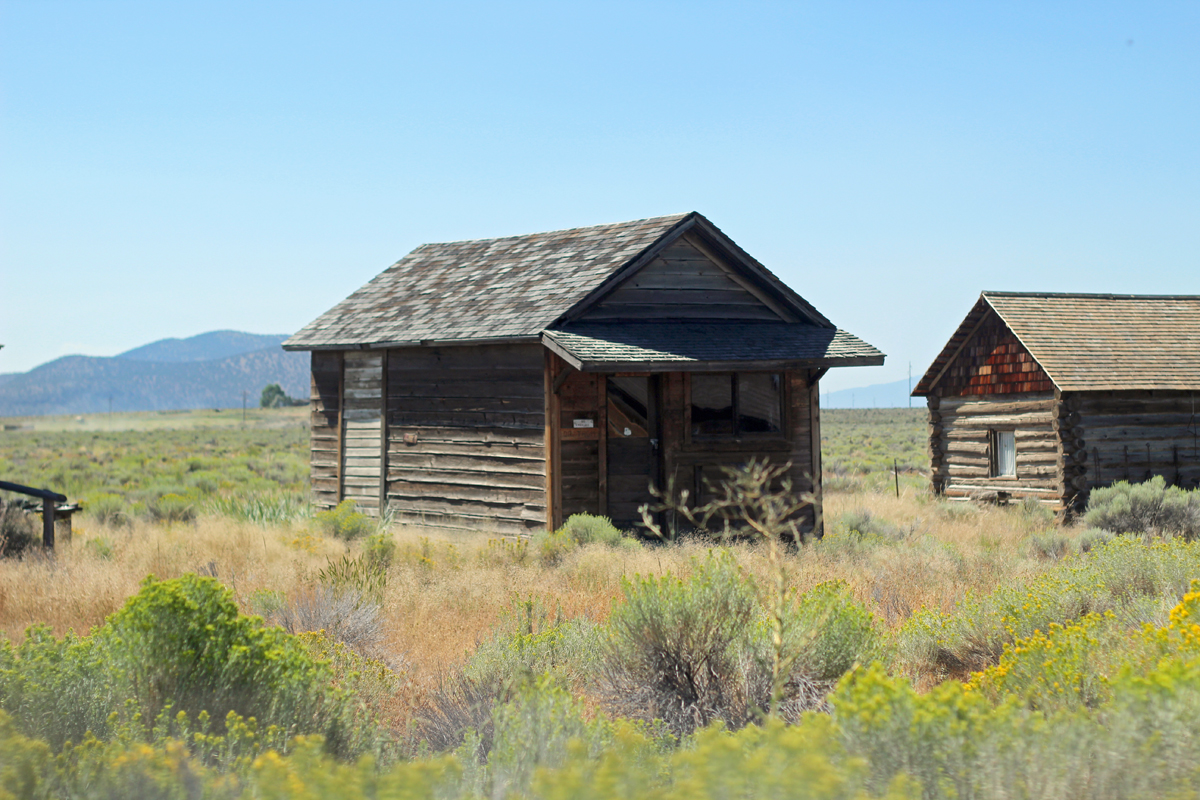
Dr Thom’s office as seen today, protected and restored at the Homestead Village Museum.
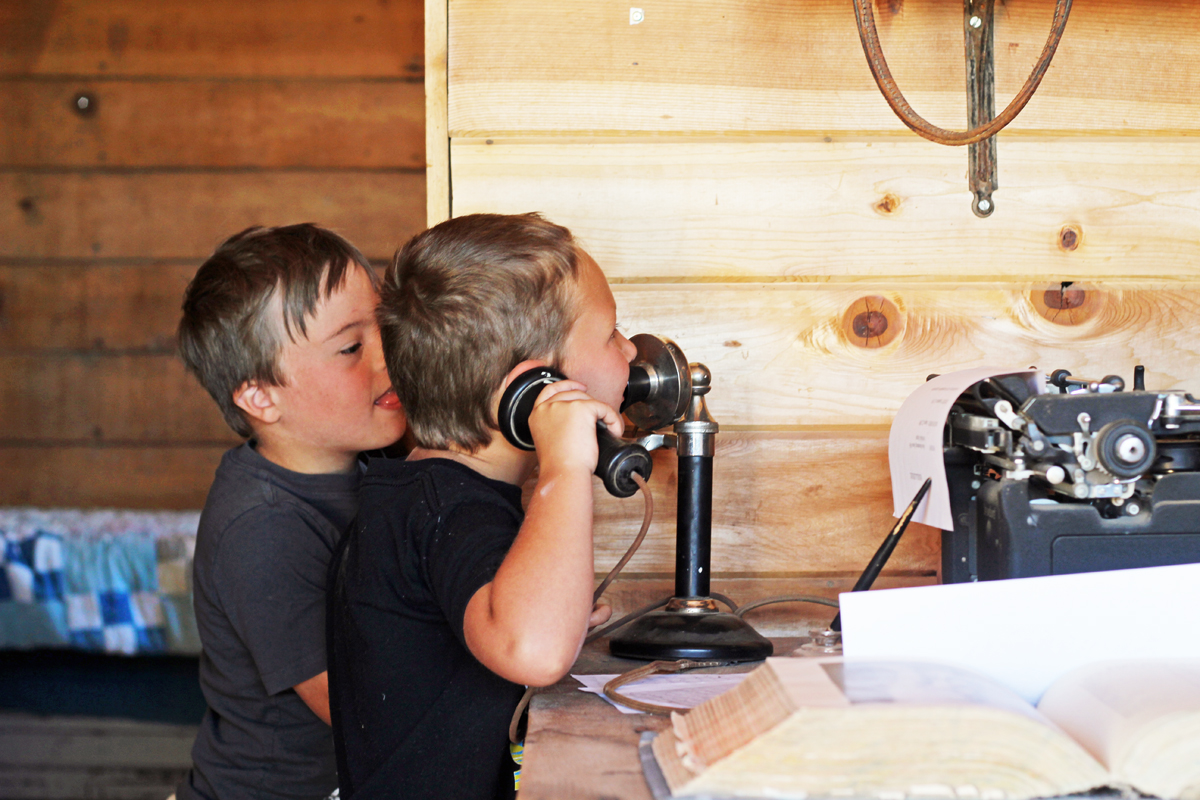
Inside Dr Thom’s office, his desk and office equipment (or those much like what he’d have used) are on display. The docent encouraged our kids to try out the old telephone.
The Artifact Building
Next up is the artifact building and is dedicated to Native American history. Outside, tables displayed a variety of mortars and pestles found in the valley. Inside is a huge collection of arrowheads and other historical artifacts from local tribes who lived here.
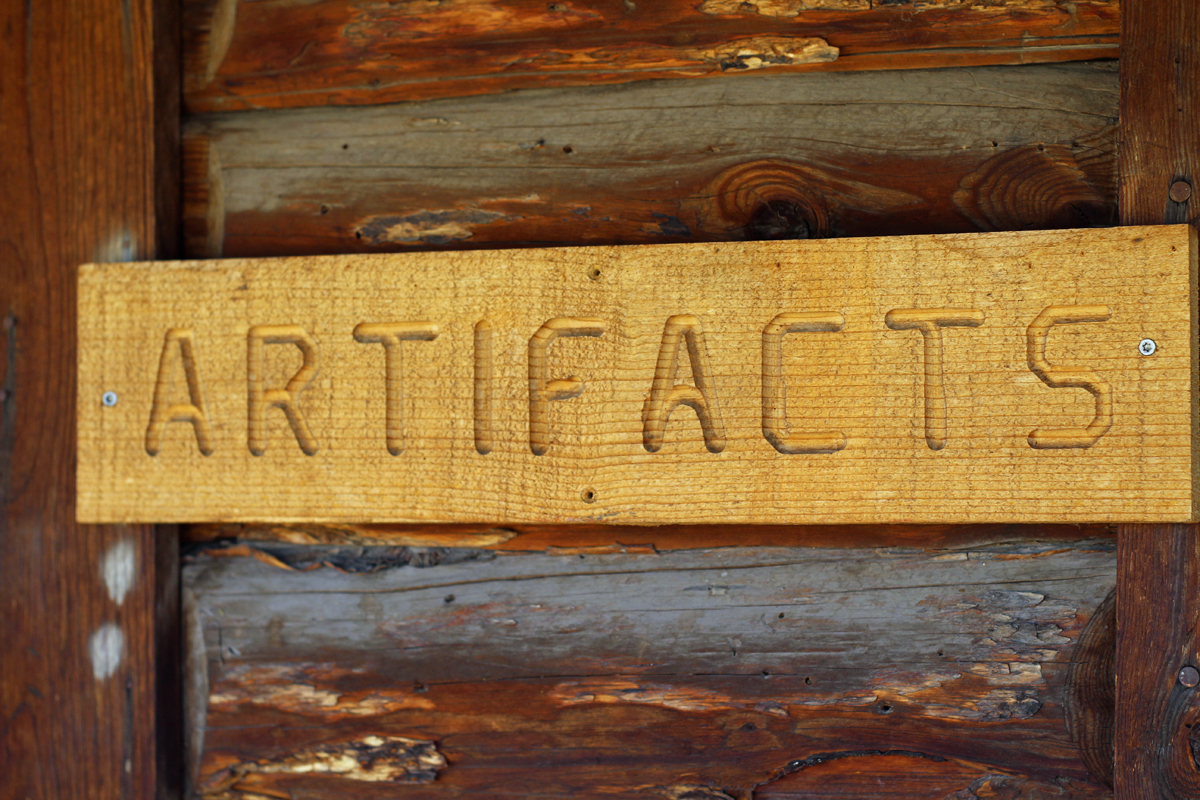
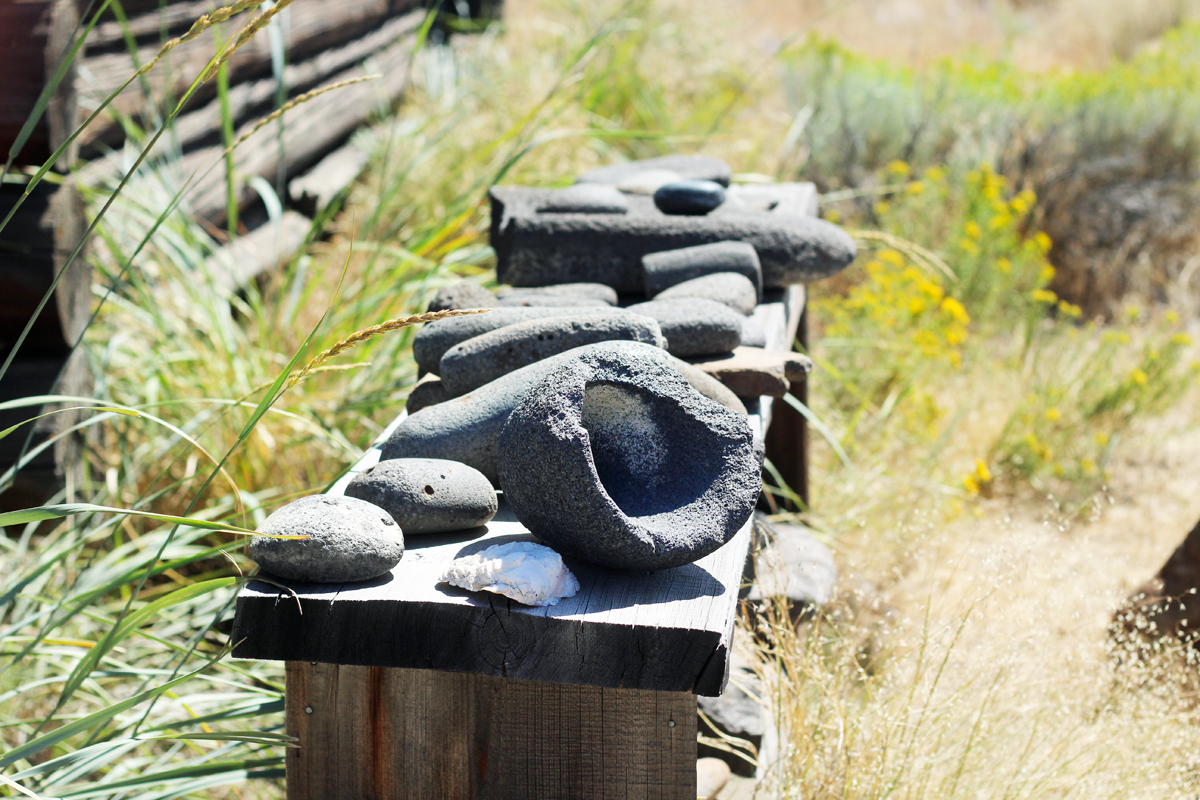
Mortar and pestle rocks used by local Native American tribes.
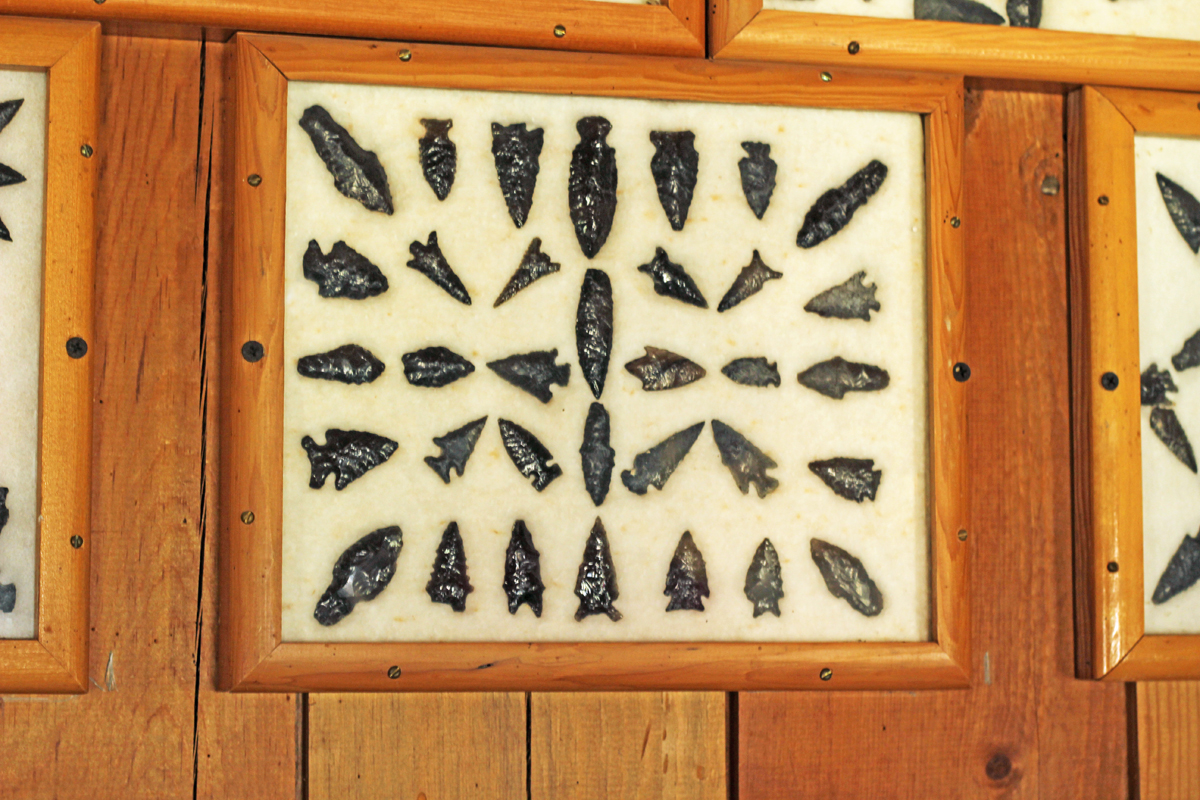
The artifact building contains hundreds of arrowheads found locally. These were carved from local obsidian by tribes who lived in the area.
Museum Grounds
Our tour was winding down, and we were eager to get back on the road to Crack in the Ground, our planned hike for the day. If you go, be sure to explore the gift shop! They have a nice selection of tshirts and history books.
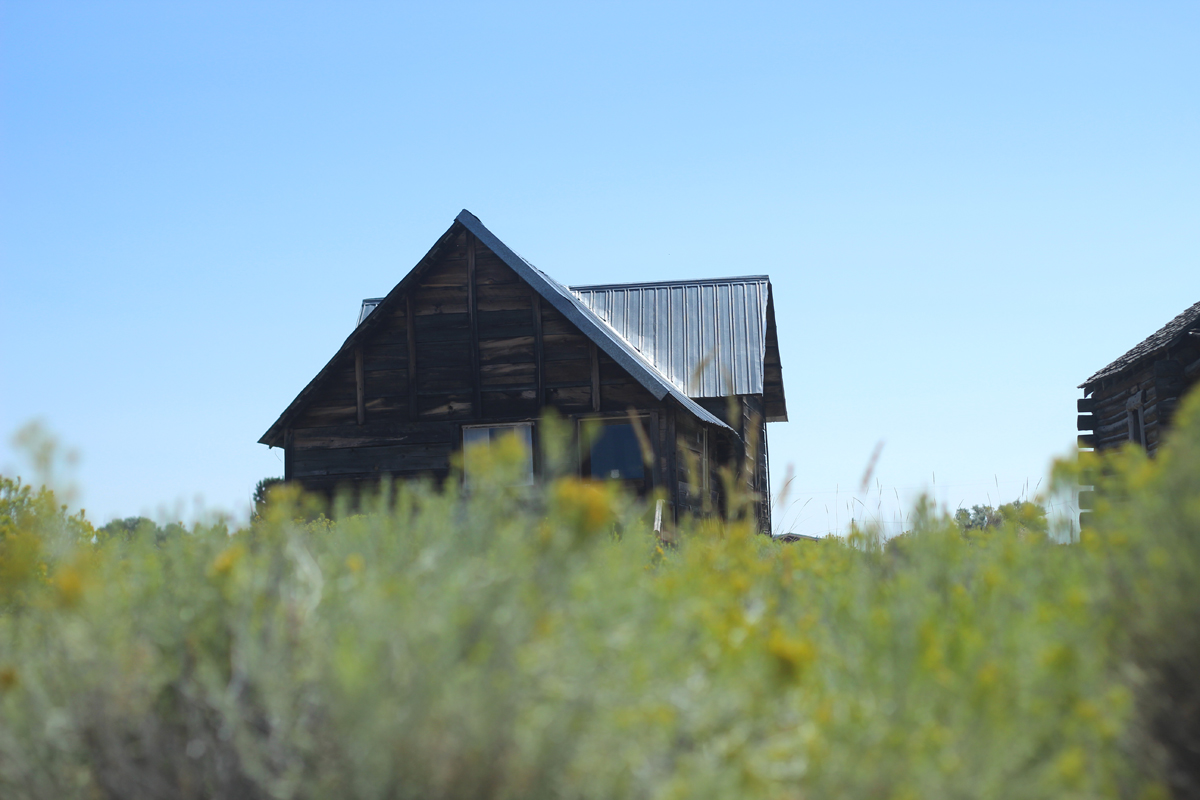
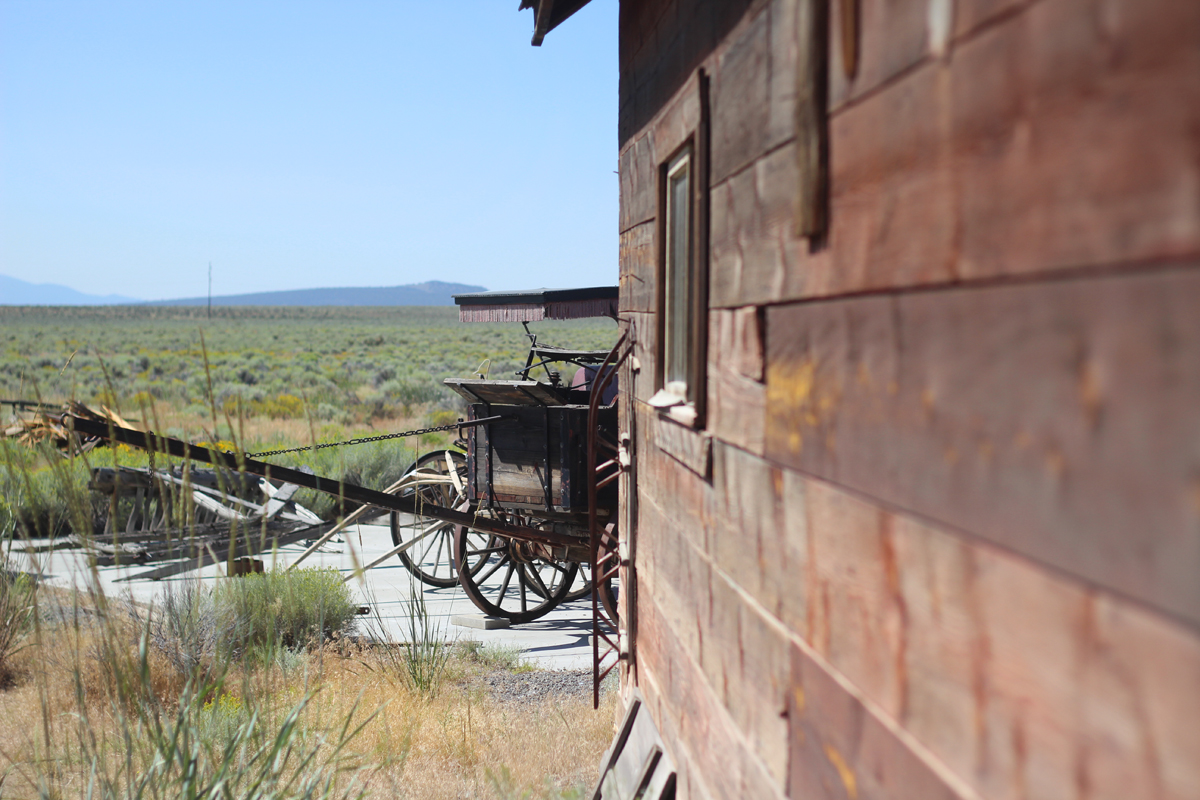
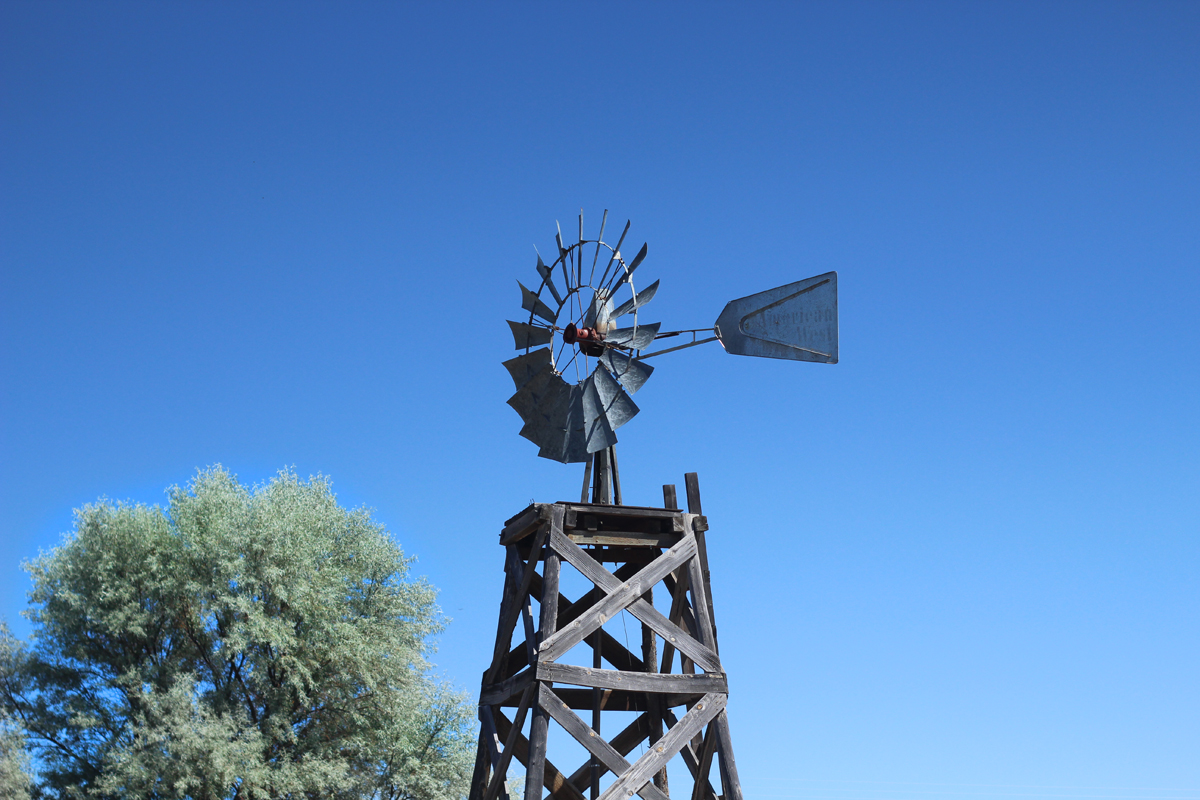
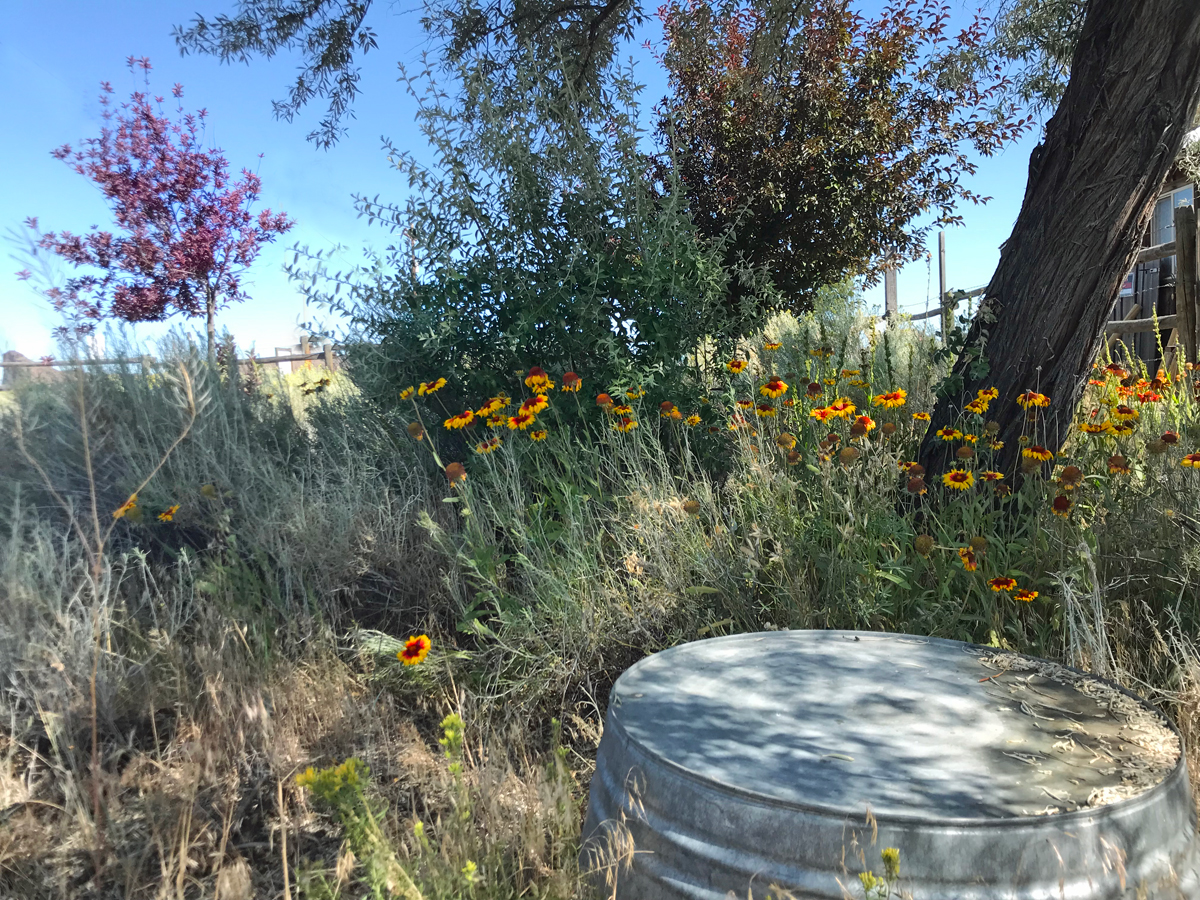
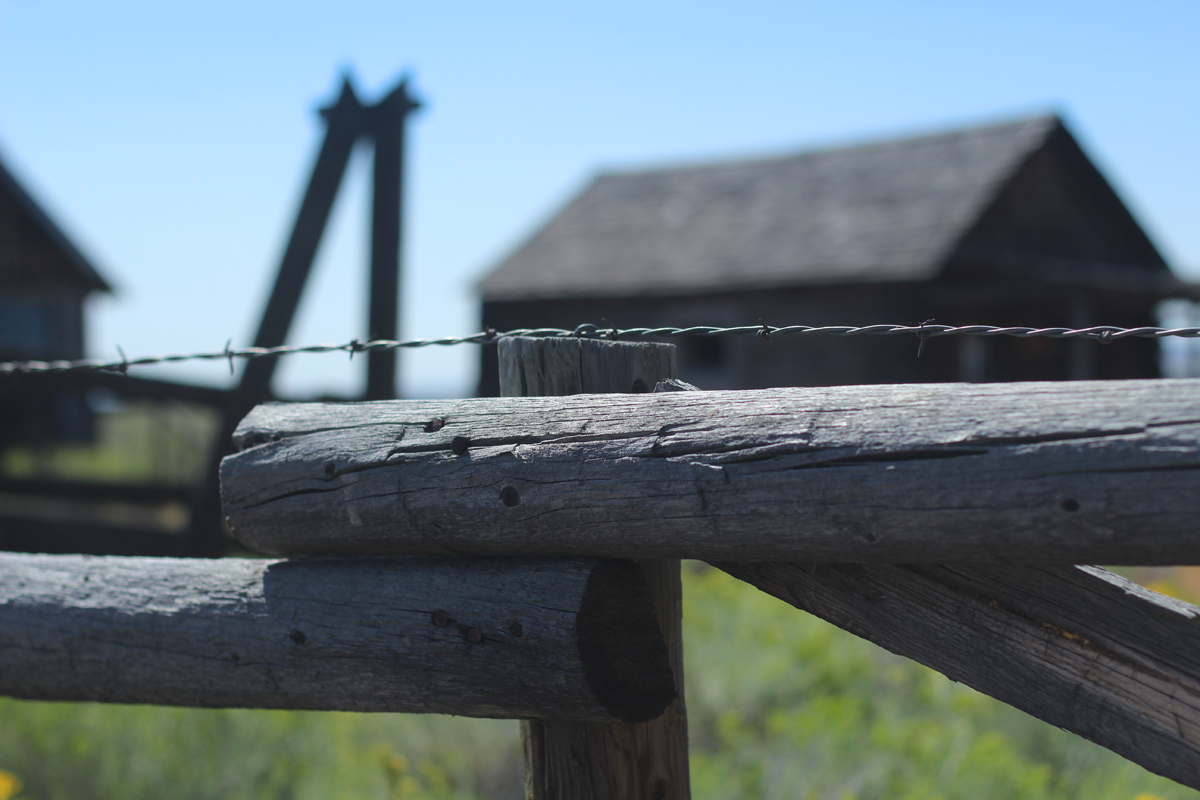

Let’s Go!
If you go, and I hope that you do, here are some details:
Check the website for hours before you go. If they aren’t open, try calling and see if a volunteer is available to show you around!
Seasonal: The museum is open seasonally May-September.
Fees: Adults — $5, Youths 6 to 17– $3, Kids 5 and under are free. VISA/MasterCard accepted
Bathrooms: the museum has bathrooms available
Accessibility: much of the village was accessible, but some buildings did have steps, narrow entrances, and rooms with tight corners.
Suitability for young children: our kids were ages 2 to 14 on our trip. Did our younger kids enjoy it? Well, they enjoyed exploring outside. Inside the buildings we held hands and looked with our eyes. But the docent was very kind and she told the kids what they could touch or couldn’t touch. My older kids (9 and 14) loved it.
